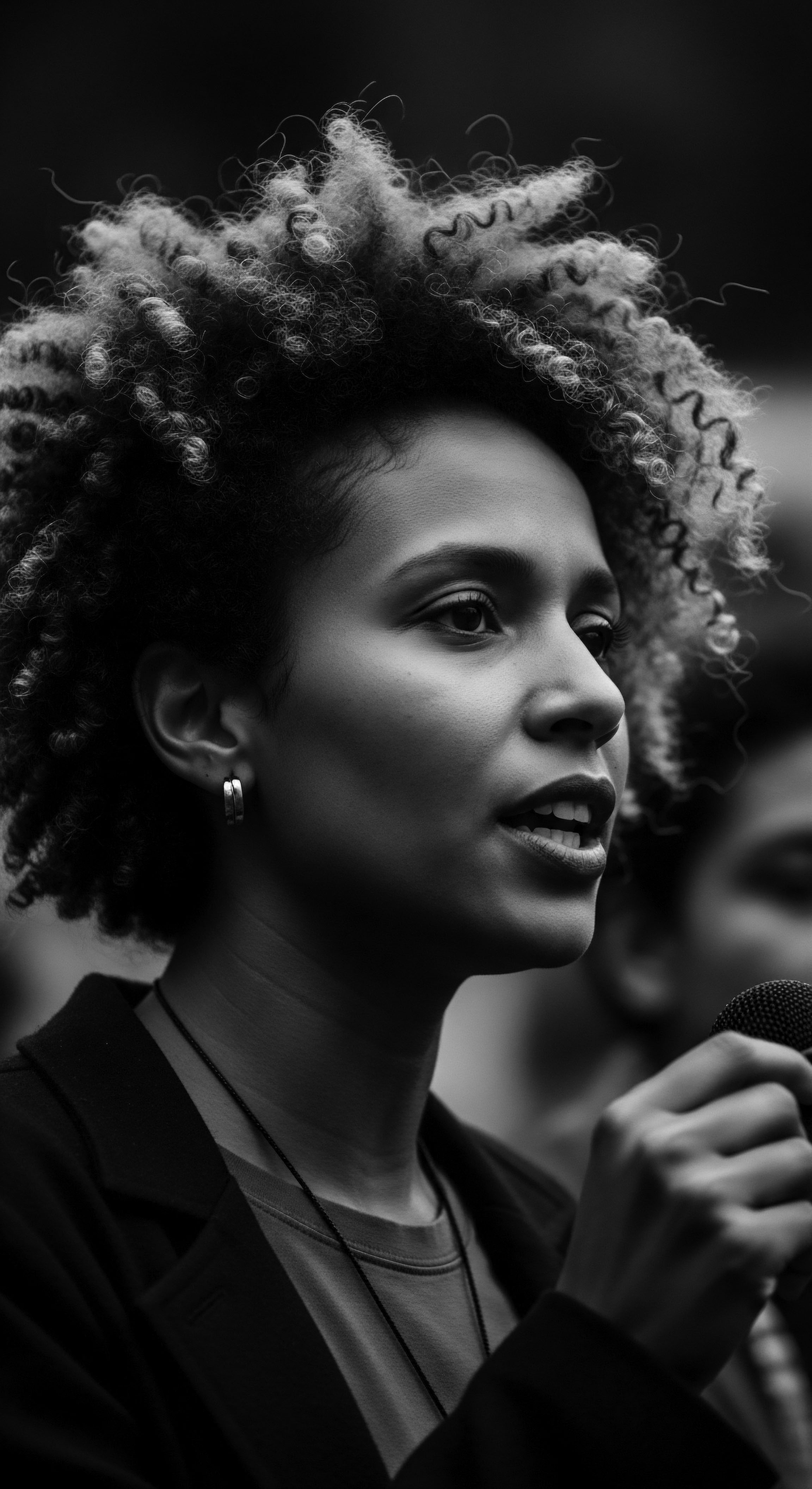
Fundamentals
Within Roothea’s living library, a profound understanding of Trichology begins not merely with clinical definitions, but with an honoring of hair’s elemental connection to self and lineage. Trichology, at its foundational interpretation, represents the scientific study of the hair and scalp, encompassing their biological structure, growth cycles, common ailments, and overall wellbeing. Yet, for textured hair, for Black and mixed-race hair, this definition extends far beyond the purely anatomical. It speaks to the intimate bond between hair, identity, and the inherited wisdom of generations.
The study of Trichology helps us grasp the fundamental processes that govern hair’s existence, from the cellular activity within the follicle to the delicate balance of the scalp’s ecosystem. It is an explanation of why our hair grows, why it changes, and why it sometimes falters. This field provides a clear delineation of hair’s capabilities and vulnerabilities, offering a pathway to thoughtful care.
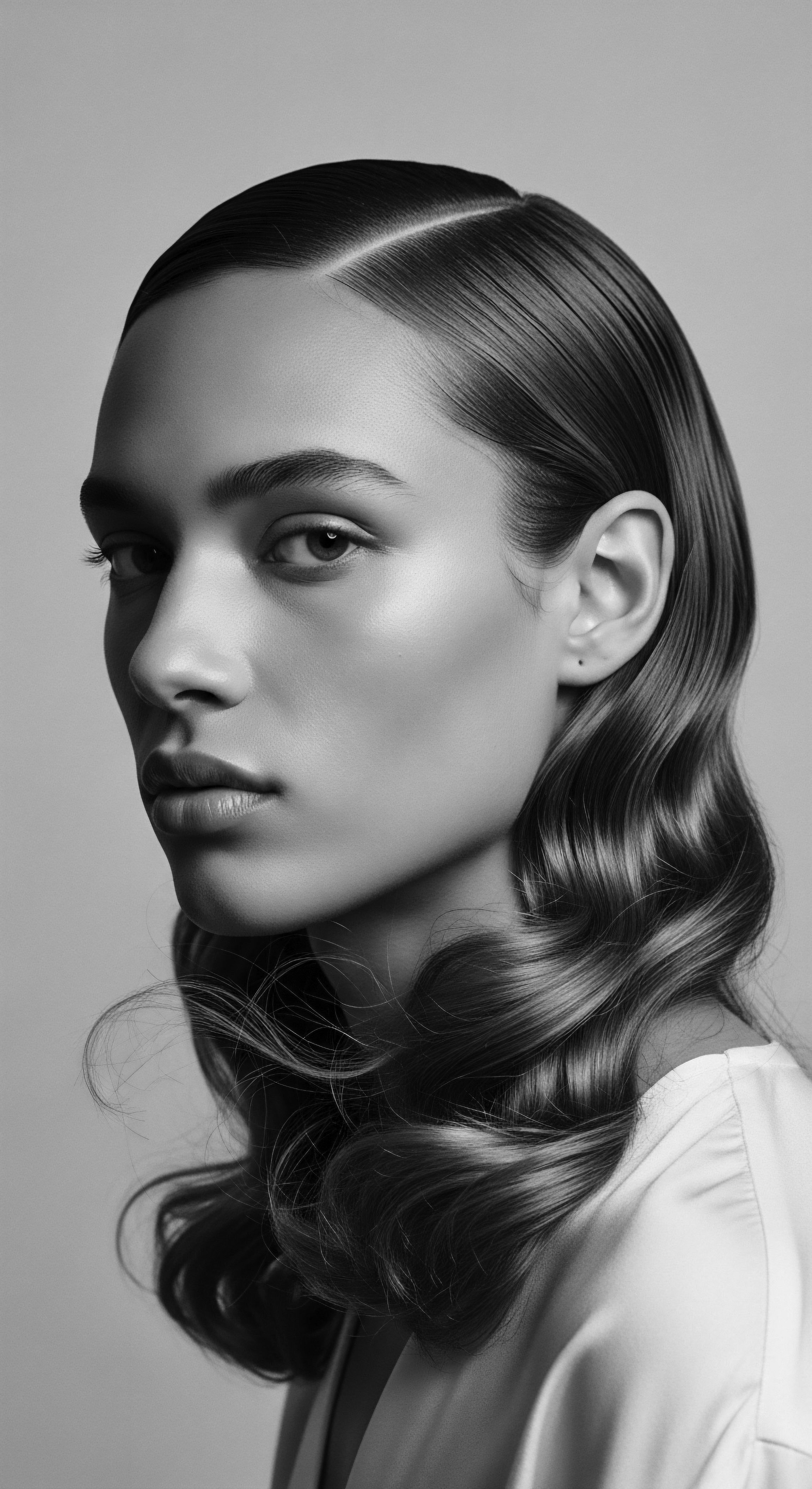
The Hair Strand ❉ An Ancestral Gift
Each strand of hair, particularly those with the beautiful coils and kinks of textured hair, is a testament to ancestral journeys. Its unique elliptical shape, its inherent dryness, and its tendency to curl upon itself are not deficiencies, but rather adaptations that speak to climates, histories, and aesthetic traditions. Understanding the hair shaft’s layers—the cuticle, cortex, and medulla—is a starting point. The cuticle, the outermost protective layer, acts as a shield, while the cortex holds the hair’s strength, elasticity, and color, and the medulla forms the innermost core.
Trichology, for textured hair, is an understanding that each strand holds the wisdom of ancestral journeys and enduring resilience.
From an ancestral perspective, these structures were observed and understood through generations of lived experience. Ancient communities developed care rituals that instinctively respected the hair’s natural inclinations, long before microscopes revealed its hidden architecture. The meaning of a healthy, lustrous strand was tied to vitality, status, and spiritual connection.
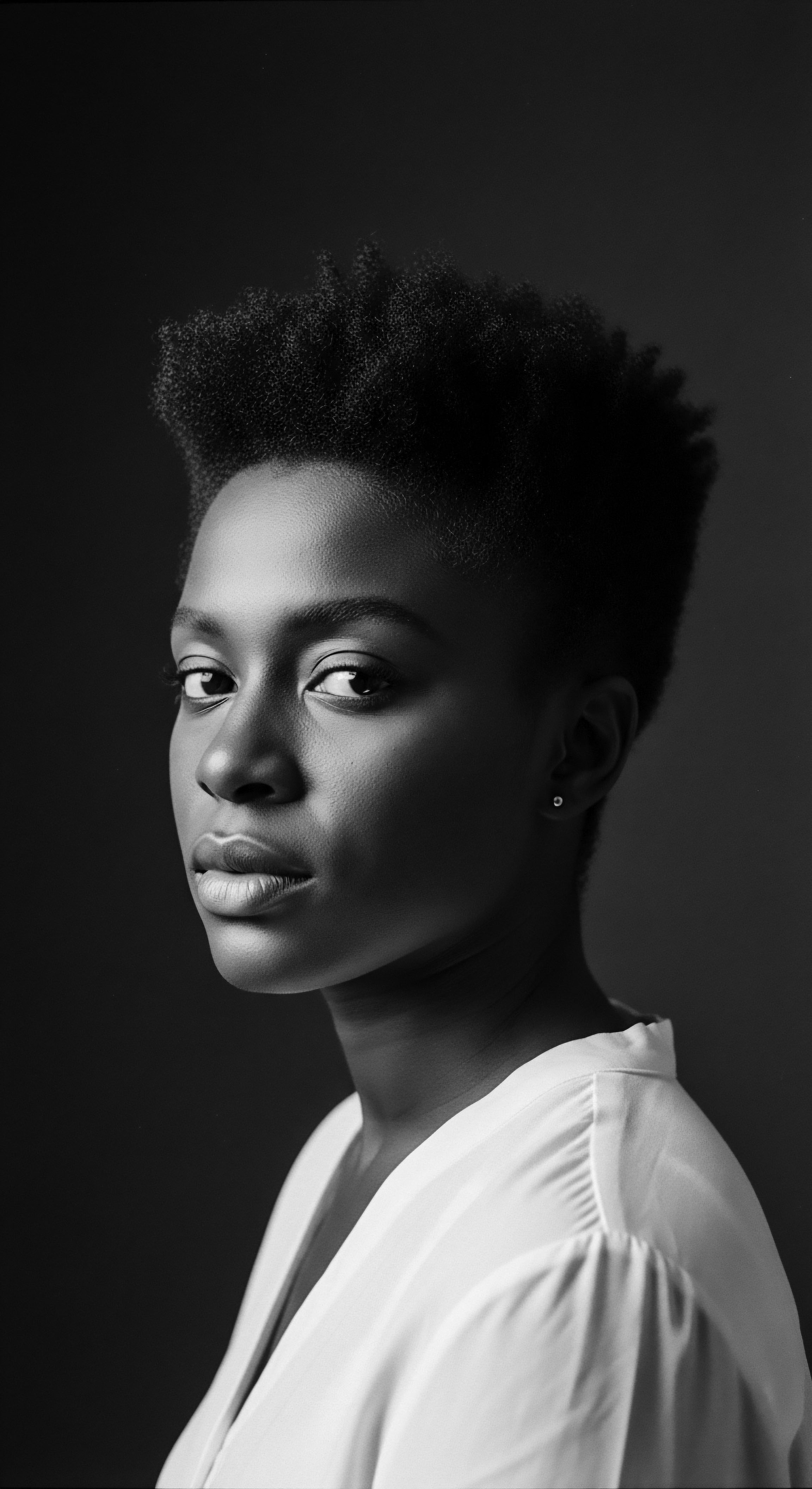
The Scalp ❉ Ground of Our Being
The scalp, the very ground from which our hair springs, holds equal significance. It is a living, breathing landscape, home to hair follicles, sebaceous glands, and a delicate microbiome. The condition of the scalp directly influences the health and vigor of the hair it produces.
For centuries, ancestral practices prioritized scalp health, recognizing it as the source of growth. Rituals involving natural oils, herbs, and gentle massage were not just about aesthetics; they were acts of profound care for the hair’s very foundation.
Early observations of scalp conditions, such as flaking or irritation, were addressed with remedies passed down through oral traditions. These practices, often rooted in local ethnobotany, formed the earliest forms of trichological understanding, long preceding formalized Western science.
Consider the early approaches to hair and scalp care across various African cultures, which laid a groundwork for understanding hair’s needs. These were not merely cosmetic acts; they were integrated into daily life, communal bonding, and spiritual practices.
| Ancient Practice (Heritage) Oiling the Scalp with plant-derived oils (e.g. shea butter, coconut oil). |
| Basic Trichological Link Nourishes scalp, reduces dryness, maintains barrier function, provides emollience to the hair shaft. |
| Ancient Practice (Heritage) Gentle Combing/Finger Detangling for textured hair. |
| Basic Trichological Link Minimizes mechanical stress, prevents breakage, distributes natural oils. |
| Ancient Practice (Heritage) Protective Styling (braids, twists) for length retention. |
| Basic Trichological Link Shields hair from environmental damage, reduces manipulation, helps retain moisture. |
| Ancient Practice (Heritage) Herbal Rinses for cleansing and conditioning. |
| Basic Trichological Link Removes impurities, balances scalp pH, provides botanical nutrients. |
| Ancient Practice (Heritage) These foundational practices illustrate an intuitive understanding of hair biology, passed through generations. |
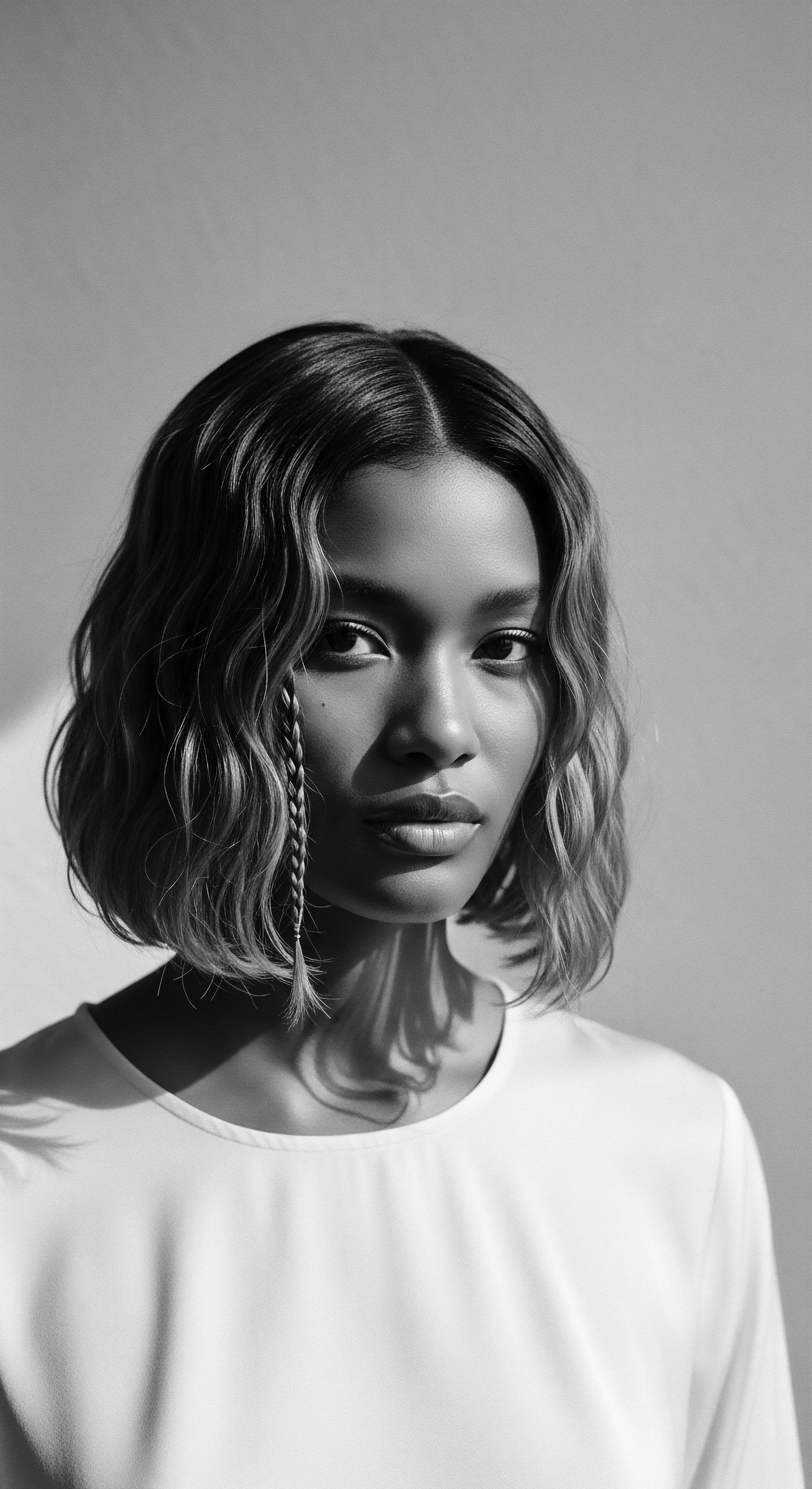
Intermediate
Stepping beyond the fundamental elements, the intermediate interpretation of Trichology begins to clarify the dynamic interplay between hair, scalp, and environmental factors, especially as they pertain to the rich diversity of textured hair. This level of understanding recognizes that hair is a living fiber, constantly responding to its internal and external environment. It shifts from a simple explanation to a more nuanced exploration of hair cycles, common challenges, and the historical adaptations within textured hair communities. The meaning here expands to include the active management of hair and scalp wellness.
The human hair cycle, a rhythmic pattern of growth (anagen), transition (catagen), and rest (telogen), is a core concept. For textured hair, this cycle can be influenced by specific care practices and environmental stressors, often leading to unique presentations of common hair conditions. Understanding these phases helps to grasp why hair sheds, why some areas grow faster than others, and how interventions can support optimal growth.
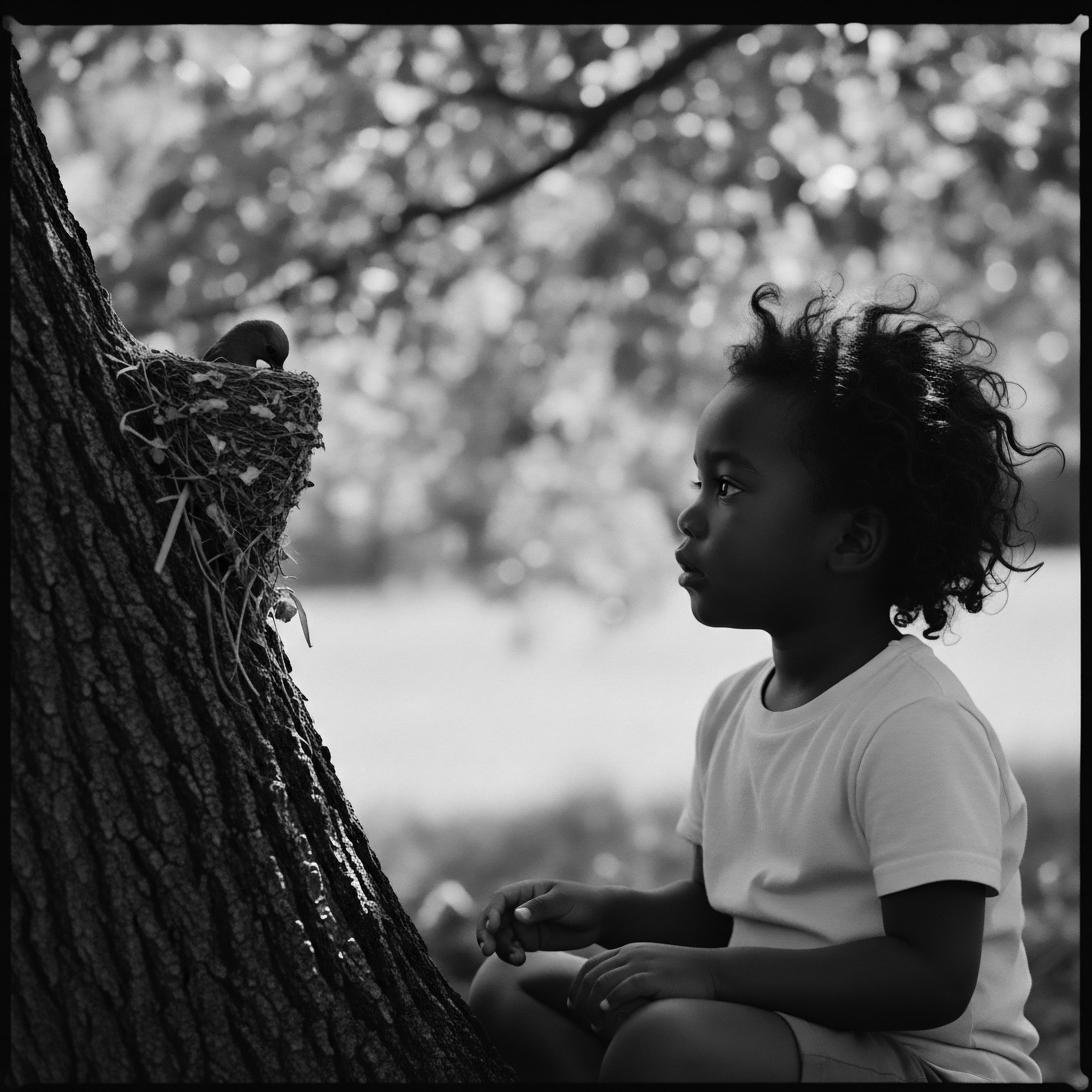
Decoding Hair’s Language ❉ Ancestral Interpretations
Ancestral communities possessed a profound capacity for observation, interpreting hair’s condition as a language of health, spirit, and societal standing. A dry, brittle strand was not merely a scientific anomaly; it was a sign of imbalance, perhaps calling for a specific herbal treatment or a change in routine. This historical perspective lends depth to our contemporary understanding of hair challenges.
Hair loss, breakage, and scalp irritation, while now classified by scientific nomenclature, were experiences understood and addressed through generations of accumulated wisdom. Traditional healers and community elders often served as the first trichologists, offering guidance rooted in collective experience and local botanical knowledge. The collective memory of communities holds invaluable lessons about managing these conditions.
Hair’s condition, through the lens of heritage, was always a message, guiding communities toward remedies found in nature and communal wisdom.
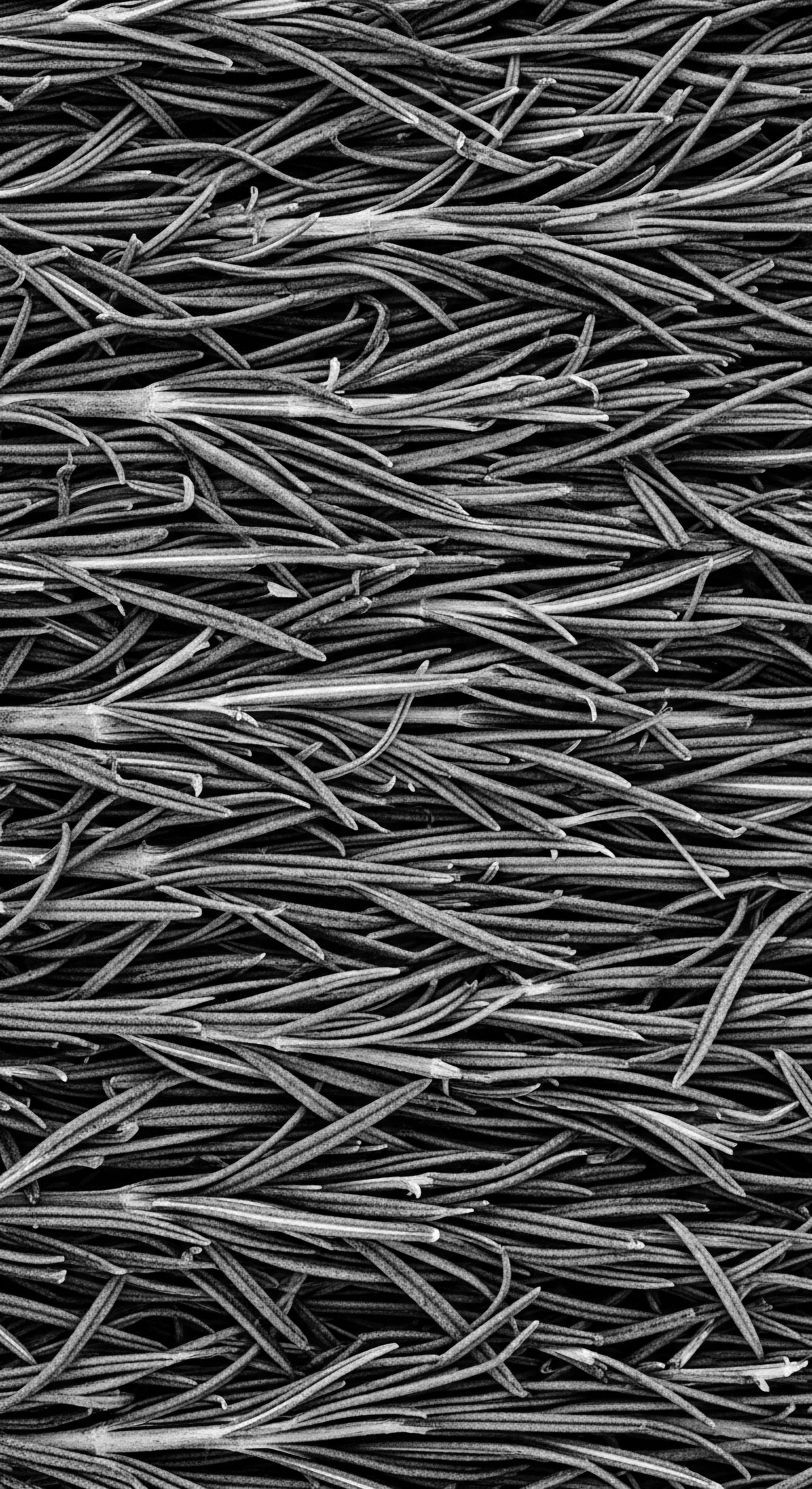
Environmental Echoes ❉ Hair’s Response to Place and Time
Textured hair, with its inherent structural qualities, often responds distinctly to humidity, climate, and styling practices. This has led to the development of specific care routines and protective styles across the diaspora. The intermediate level of Trichology acknowledges these unique responses and the historical ingenuity employed to maintain hair health despite challenging circumstances.
Consider the practices developed by enslaved Africans and their descendants, who, stripped of their traditional tools and ingredients, adapted new methods to care for their hair. This period saw the reinvention of hair care, often under duress, yet it also gave rise to new forms of resilience and creativity in styling and maintenance.
- Dryness Management ❉ Textured hair’s unique structure, with its many twists and turns, makes it harder for natural scalp oils to travel down the hair shaft, leading to dryness. Ancestral solutions involved rich butters and oils to seal in moisture.
- Breakage Prevention ❉ The points where coils bend are more vulnerable to breakage. Protective styles like braids and twists, practiced for centuries, minimize manipulation and shield these delicate areas.
- Scalp Wellness ❉ Conditions like seborrheic dermatitis, while modernly diagnosed, were likely addressed with clarifying herbal rinses and gentle cleansing methods in ancient times.
The significance of these traditional approaches lies in their holistic nature, treating hair not in isolation but as an integral part of a person’s overall wellbeing and cultural identity. The intermediate definition of Trichology, therefore, honors this continuous thread of care, from ancient remedies to contemporary understanding, all woven around the specific needs of textured hair.
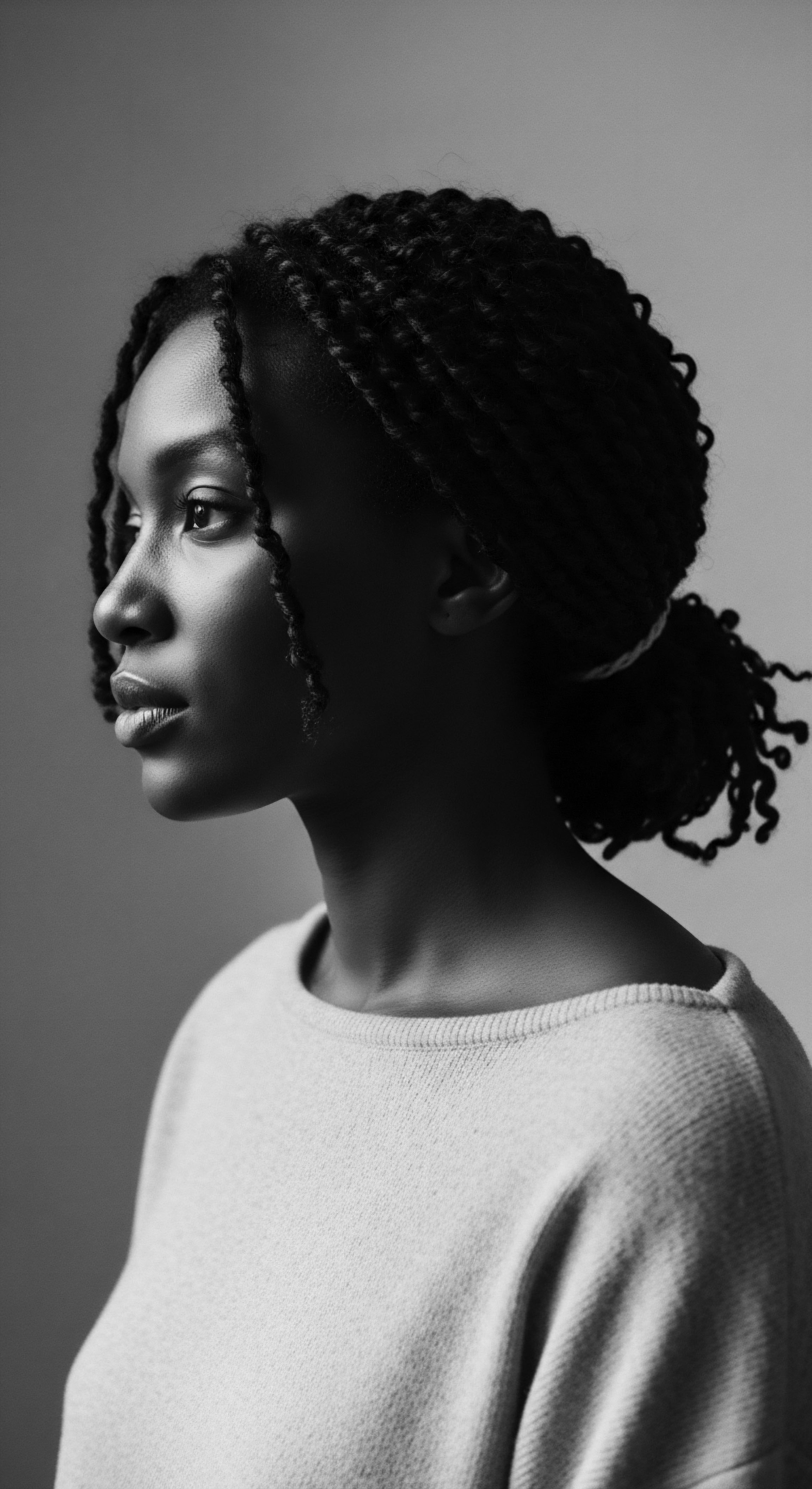
Academic
At the academic level, the meaning of Trichology expands into a rigorous scientific discipline, demanding a comprehensive understanding of hair and scalp biology, pathology, and therapeutics, while critically engaging with its historical biases and the unique needs of textured hair. This advanced interpretation moves beyond basic descriptions to a profound delineation of the complex mechanisms underlying hair health and disease, scrutinizing them through a lens that acknowledges and prioritizes the rich heritage of Black and mixed-race hair experiences. It is a specification of how cellular, molecular, and genetic factors contribute to hair’s condition, and how these scientific insights intersect with cultural practices and historical realities.
The field encompasses detailed anatomical studies of the pilosebaceous unit, physiological analyses of hair growth kinetics, and biochemical investigations into the hair shaft’s composition. It involves the precise identification of various alopecias, scalp dermatoses, and hair shaft disorders, utilizing diagnostic tools such as trichoscopy, biopsy, and advanced laboratory tests. Furthermore, it delves into the pharmacological and non-pharmacological interventions designed to restore or preserve hair and scalp health.
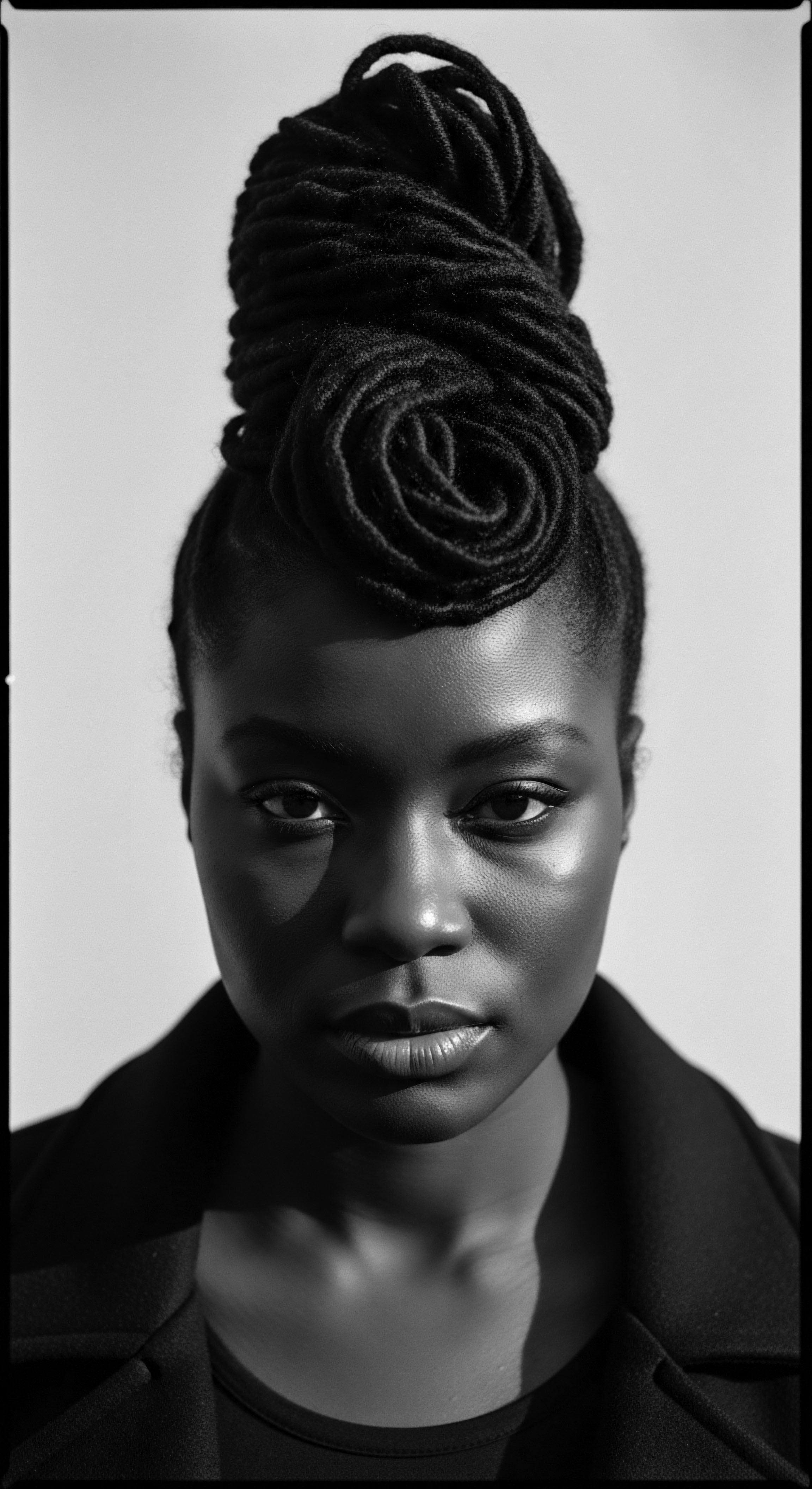
The Scientific Lens, Through a Cultural Prism
Historically, mainstream trichological and dermatological research often overlooked or misrepresented textured hair, categorizing its unique characteristics as deviations rather than natural variations. This created a knowledge gap, leading to inadequate care and sometimes exacerbating existing conditions within Black and mixed-race communities. A truly academic understanding of Trichology today necessitates rectifying this historical oversight, integrating culturally competent perspectives into research, diagnosis, and treatment. This involves recognizing that the structural distinctions of textured hair—its elliptical cross-section, tighter curl patterns, and fewer cuticle layers at points of curvature—render it more susceptible to certain forms of mechanical and chemical damage.
The practice of trichology, in its highest form, acknowledges the historical and ongoing impact of societal beauty standards on hair care practices. The pursuit of straightened hair, often driven by Eurocentric ideals, led to widespread use of chemical relaxers and excessive heat. These practices, while offering temporary stylistic conformity, frequently resulted in irreversible damage to the hair follicle and shaft. This historical context is paramount for any comprehensive academic study of textured hair trichology.
Academic Trichology for textured hair demands a critical examination of historical biases, ensuring scientific rigor aligns with cultural sensitivity and the unique physiological truths of diverse hair types.
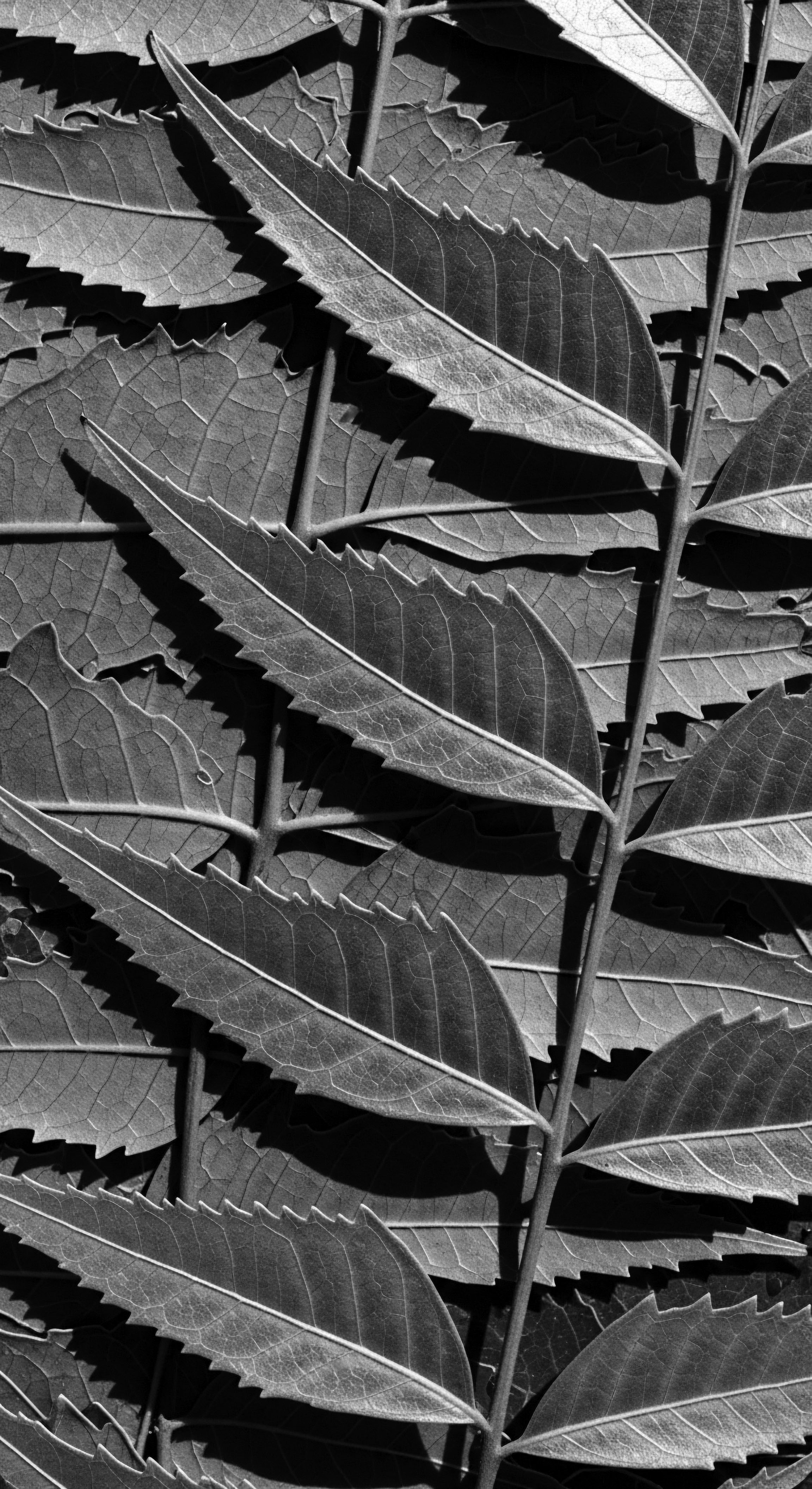
Pathologies and Pedigrees ❉ Unpacking Hair Conditions in Textured Strands
A significant area of academic inquiry within textured hair trichology involves conditions disproportionately affecting individuals of African descent. Traction alopecia (TA) stands as a stark example. This form of hair loss, caused by repetitive tension on the hair follicles, is deeply intertwined with historical and contemporary styling practices. A study by Gathers and Pierre-Louis (2016) reported that traction alopecia affects approximately one-third of African American women , highlighting the profound and widespread impact of styling choices on hair health within this community.
This statistic is not merely a number; it represents generations of individuals navigating societal pressures, often at the expense of their hair’s physiological wellbeing. The prevalence of TA underscores the need for trichological interventions that are not only scientifically sound but also culturally informed and empathetic.
Another critical condition is Central Centrifugal Cicatricial Alopecia (CCCA), a primary scarring alopecia predominantly affecting Black women. While its exact etiology remains under active investigation, genetic predispositions and certain hair care practices, including the long-term use of chemical relaxers and tight styles, are considered contributing factors. The exploration of CCCA from an academic trichological standpoint requires a multi-faceted approach, combining dermatopathology, genetics, and a deep understanding of the socio-historical pressures that shaped hair care traditions.
The understanding of hair shaft disorders, such as trichorrhexis nodosa (nodules along the hair shaft that represent points of breakage), is also heightened when considering textured hair. The natural twists and turns of coiled hair make it inherently more vulnerable to mechanical stress and chemical processing, often leading to these points of fragility.

The Unseen Architects ❉ Microscopic Worlds and Ancestral Wisdom
The academic lens reveals the intricate cellular and molecular processes occurring within the hair follicle and scalp. This includes the role of various growth factors, cytokines, and hormones in regulating the hair cycle, as well as the immunological responses that can lead to inflammatory scalp conditions. For textured hair, research increasingly focuses on the specific genetic markers and inflammatory pathways that may predispose individuals to conditions like CCCA or lichen planopilaris.
Consider the detailed analysis of the hair follicle’s stem cell niche, which dictates hair regeneration. Disruptions to this delicate environment, whether from chronic inflammation, genetic factors, or persistent physical trauma (as seen in severe traction), can lead to permanent hair loss. Understanding these microscopic dynamics allows for the development of targeted therapies, moving beyond symptomatic relief to addressing the root causes of hair and scalp issues.
The academic pursuit of Trichology, therefore, is not a detached scientific exercise. It is a dynamic field that continually integrates new scientific discoveries with the enduring lessons of ancestral wisdom. It seeks to bridge the gap between historical observations of hair health and modern diagnostic precision, ensuring that the care provided is holistic, respectful, and truly transformative for individuals with textured hair.
| Traditional Care Practice Herbal Infusions for Scalp Health (e.g. Chebe powder in Chad for length retention). |
| Academic Trichological Principle Addresses scalp inflammation, provides antioxidants, potentially strengthens hair shaft integrity, promotes length retention by reducing breakage. |
| Heritage Connection Generational knowledge of local botanicals; a legacy of self-sufficiency in hair care. |
| Traditional Care Practice Communal Braiding Rituals (e.g. 'Irun Kiko' among Yoruba people). |
| Academic Trichological Principle Reduces daily manipulation, distributes tension, promotes scalp stimulation through gentle handling, minimizes breakage from styling. |
| Heritage Connection Social cohesion, knowledge transfer, and artistic expression deeply embedded in cultural identity. |
| Traditional Care Practice Use of Natural Butters/Oils (e.g. Shea butter) as sealants. |
| Academic Trichological Principle Replenishes lipid barrier, reduces transepidermal water loss from scalp, provides external lubrication to hair shaft, reduces friction and breakage. |
| Heritage Connection Resourcefulness with indigenous ingredients; understanding of hair's inherent need for moisture. |
| Traditional Care Practice Headwraps/Scarves for protection. |
| Academic Trichological Principle Shields hair from environmental aggressors (sun, wind, dust), reduces moisture evaporation, minimizes mechanical damage. |
| Heritage Connection Symbol of modesty, status, and protection across many African and diasporic cultures. |
| Traditional Care Practice This table highlights how ancestral practices, often intuitive, align with and are illuminated by modern trichological science, reaffirming the deep intelligence embedded in heritage. |
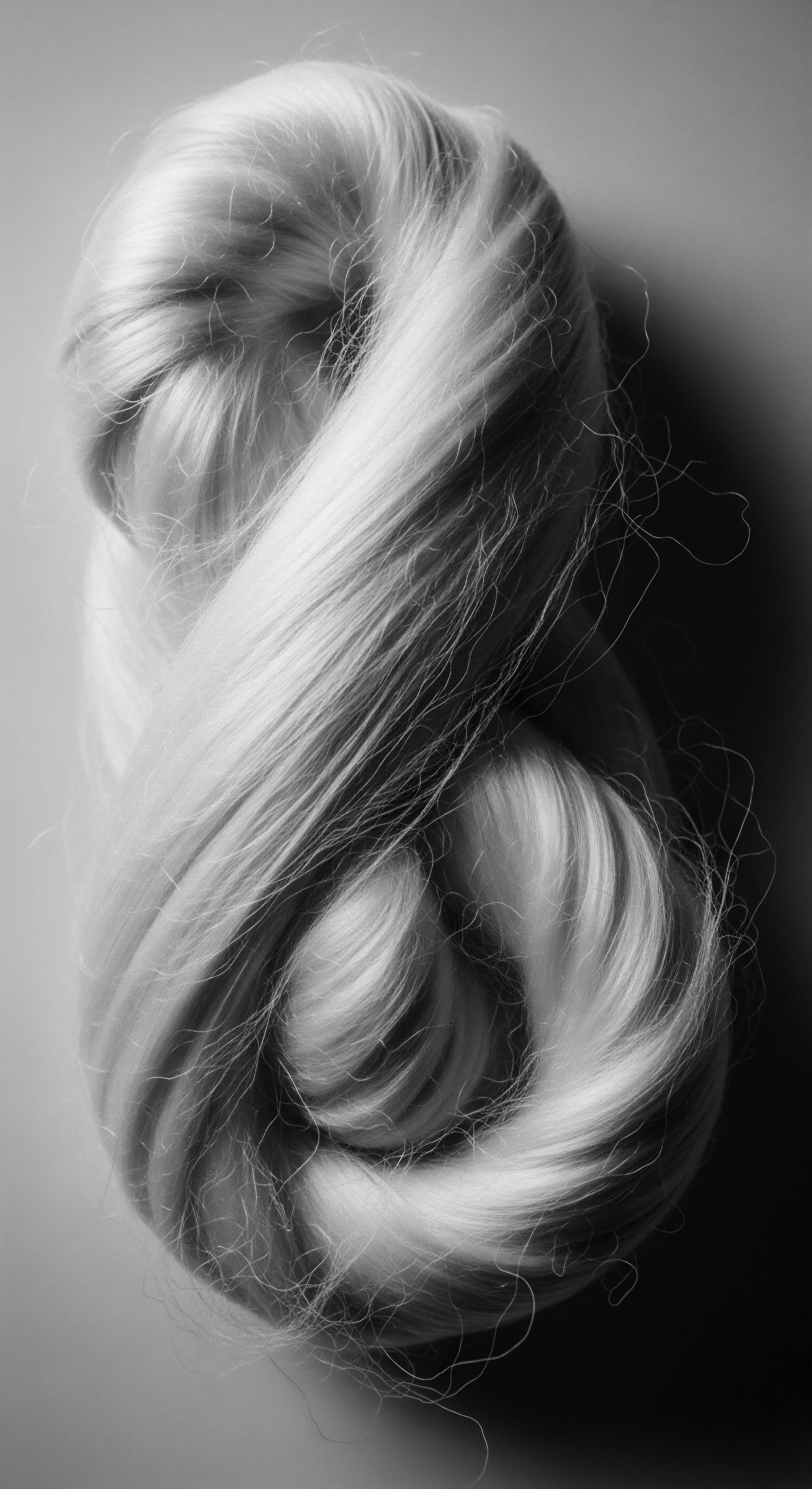
Reflection on the Heritage of Trichology
The journey through Trichology, from its elemental biological truths to its academic complexities, reveals a profound, enduring connection to the heritage of textured hair. It is a continuous narrative, an unbroken lineage of understanding and care that spans continents and centuries. The ‘Soul of a Strand’ ethos reminds us that hair is more than keratin and cells; it is a living archive, holding the echoes of ancient wisdom, the resilience of diasporic survival, and the vibrant expression of identity.
The traditional practices of our ancestors, born from keen observation and a deep reverence for the natural world, laid the groundwork for what we now categorize as trichological principles. They understood the hair’s need for moisture, the scalp’s role as its fertile ground, and the protective power of thoughtful styling, long before scientific terms were coined. This ancestral knowledge, passed down through generations, represents an invaluable form of experiential data, a living library of hair wellness.
In contemporary times, as we peel back layers of historical neglect and Eurocentric biases within hair science, we discover that modern Trichology gains immense strength and relevance when it humbly acknowledges and integrates these heritage insights. The challenges faced by textured hair, such as traction alopecia or CCCA, are not merely biological phenomena; they are also socio-historical scars, calling for care that is both clinically sound and culturally sensitive.
Roothea’s mission is to be a sanctuary for this holistic understanding. It seeks to honor the enduring legacy of hair traditions while embracing the advancements of science. The path forward involves a continuous dialogue between past and present, between ancestral wisdom and contemporary research, ensuring that every strand of textured hair is seen, celebrated, and cared for with the dignity and understanding it deserves. This ongoing conversation allows us to voice identity, shape futures, and continue the tender thread of hair heritage.
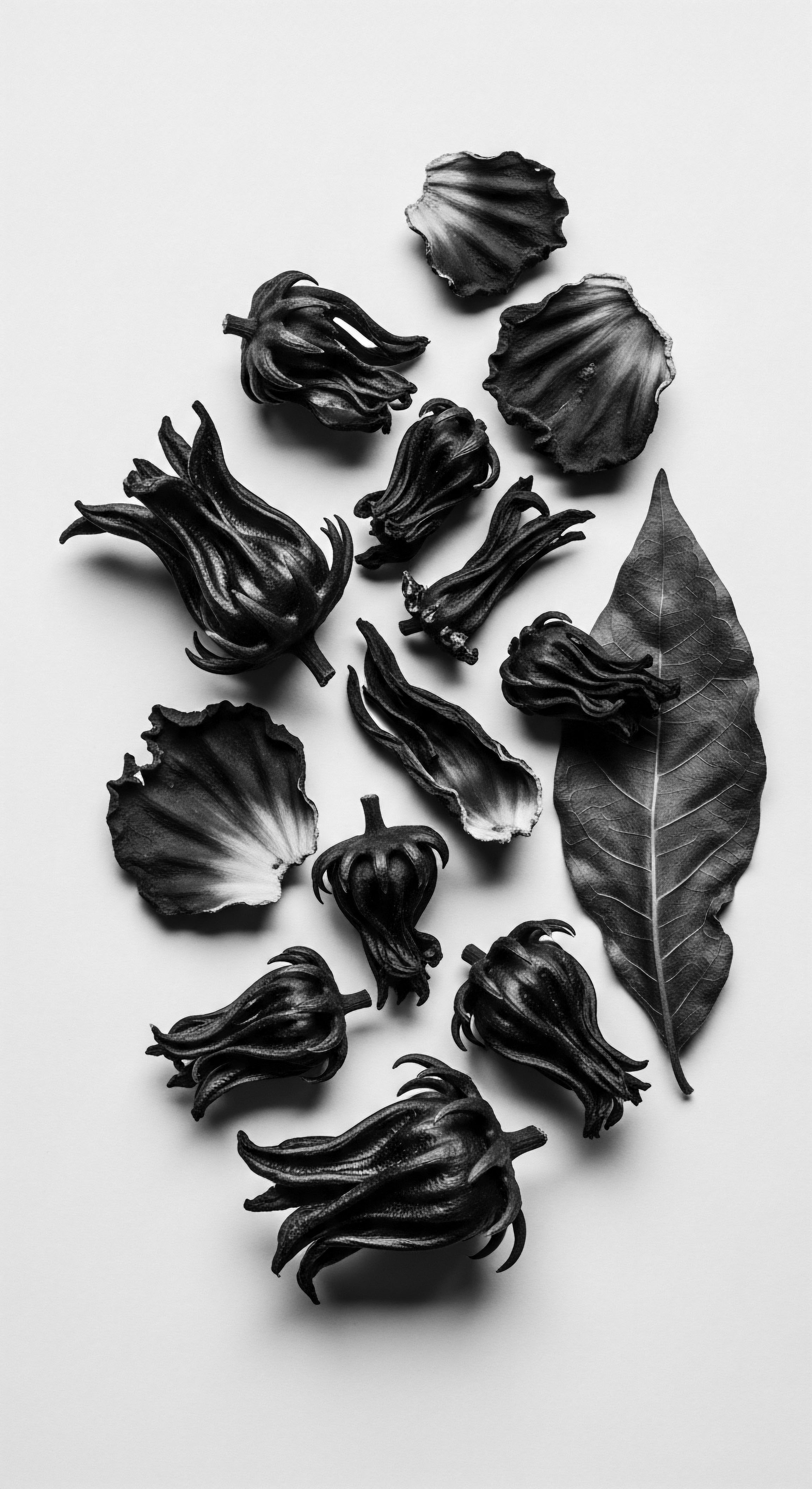
References
- Gathers, M. A. & Pierre-Louis, A. (2016). Traction Alopecia ❉ A Review of Epidemiology, Diagnosis, and Treatment. Journal of the American Academy of Dermatology, 75(6), 1221-1229.
- Khumalo, N. P. (2017). Hair Loss in Women of African Descent ❉ An Overview. Dermatology and Therapy, 7(3), 329–340.
- Roberts, W. E. (2018). Hair and Scalp Disorders in Women of Color. Dermatologic Clinics, 36(1), 1-10.
- Callender, V. D. Wright, D. R. Davis, E. C. & Sperling, L. C. (2012). Hair Breakage as a Presenting Sign of Early or Occult Central Centrifugal Cicatricial Alopecia. Archives of Dermatology, 148(9), 1047-1052.
- Salam, A. Aryiku, S. & Dadzie, O. E. (2013). Hair and Scalp Disorders in Women of African Descent ❉ An Overview. British Journal of Dermatology, 169 Suppl 3, 19-32.
- Okereke, J. C. et al. (2018). Hair Care Practices and the Incidence of Hair Loss in African American Women ❉ A Cross-Sectional Study. Journal of the American Academy of Dermatology, 78(5), AB109.
- Khumalo, N. P. et al. (2007). Hairdressing and the Prevalence of Scalp Disease in African Adults. British Journal of Dermatology, 157(5), 981-988.
- Dermatology in Pigmented Skins ❉ An Illustrated Guide. (2019). Wiley Blackwell. (General reference for skin of color dermatology, including hair).
- Jackson, J. A. (2019). Hair Story ❉ Untangling the Roots of Black Hair in America. St. Martin’s Press. (Cultural and historical context).
- Walker, A. (1983). In Search of Our Mothers’ Gardens ❉ Womanist Prose. Harcourt Brace Jovanovich. (Cultural significance of hair).
